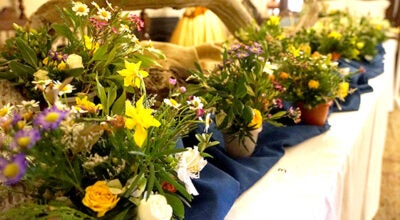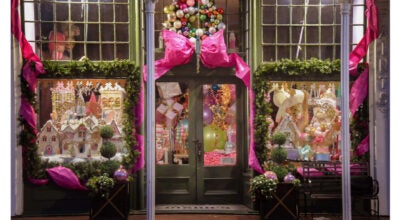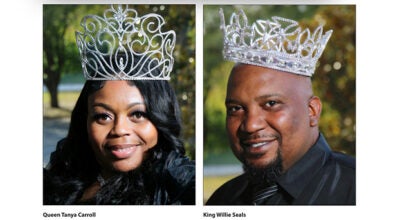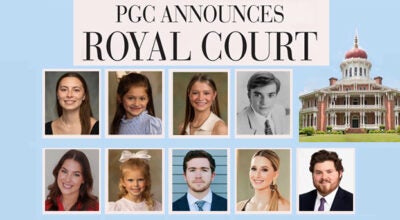Westminster Presbyterian Church dedicates prayer labyrinth
Published 12:03 am Sunday, January 3, 2016

Ben Hillyer/The Natchez Democrat — Westminster Presbyterian Church members Judy and Dennis Kelly helped build the church’s prayer labyrinth with other church members as a way to offer the community an opportunity for spiritual reflection and meditation. The labyrinth, which can be accessed from the church parking lot on Fatherland Road during the daytime, includes a cross sculpture and benches for quiet contemplation.
NATCHEZ — Perhaps the word “labyrinth” conjures up images of a scary maze or a deep, dangerous tunnel.
But for members of Westminster Presbyterian Church, it means a peaceful, prayerful stroll.
Volunteers and congregation members from the church on Fatherland Road have built their very own labyrinth, a circular pattern made of monkey grass and decorative landscaping. The path is meant to be a meditative walkway for members of the congregation as well as the community as a whole.
The church’s labyrinth committee chairwoman Judy Kelly said she hopes the project will be used by anyone who finds it interesting.
“If you like what you see outside, come on in,” she said.
The church has published a guiding pamphlet for users of the labyrinth, which includes suggested meditations from scripture and tips on how to get the most out of the prayerful walk.
The walkway is not a maze; it is impossible to take a wrong turn, and there are no dead ends. The path leads around the circular pattern four times, eventually landing in the center, which contains a peaceful prayer area with two benches and a small brick patio.
The way in is also the way out, and Kelly recommends using both directions to complete the meditation. However, it is easy to escape the pathway at any time by simply stepping over the low monkey grass edging.
The use of labyrinths goes back thousands of years. The Catholic Church adapted the labyrinth in the Middle Ages and included them in some of the towering cathedrals of Europe. Evidence of these ringed pathways exists in many parts of the world including Ancient Rome and Greece, Egypt, Asia and even in some North American Indian tribes.
“Someone of the Buddhist or Muslim faith would be welcome,” Kelly said, “and it would be an appropriate place for them to enter into communication with the Lord.”
Westminster Presbyterian Church started the labyrinth project as a way to revitalize their congregation.
Kelly said the church population is mostly senior citizens.
“When we get together, the conversation always turns to how to attract people to the church,” she said.
At one of their monthly after-church lunches, the congregation had a formal brainstorm session, and the idea of building the labyrinth was brought up.
Over the next few months, the members of the labyrinth committee visited several similar sites in Baton Rouge to compare construction methods and to decide what they wanted theirs to look like.
The traditional seven-circuit design was scaled down to only four loops around the labyrinth area so the path could be widened to accommodate wheelchairs.
Kelly and her husband, Dennis, are members of the Master Gardeners, a state-run public service organization that volunteers in landscaping and beautification projects in public spaces.
The church did not hire any labor for the construction; the Kellys and other congregation members volunteered their time and materials to the project.
The archway entrance, planting and laying of decorative bricks at the center were done by volunteer hands, and the monkey grass which edges the pathway as well as the special, spongy Zoysia grass used for the path were donated by members of the church’s labyrinth committee.
“It’s wonderfully peaceful,” Kelly said. “You go in, not speaking with anybody. You can think about your problems or blessings or just clear your mind.”
Kelly said members of the community were already frequenting the structure to sit on the benches and walk the path.
“There’s a feeling of peace and connection,” Kelly said. “I somehow just feel better after I’ve done it.”





